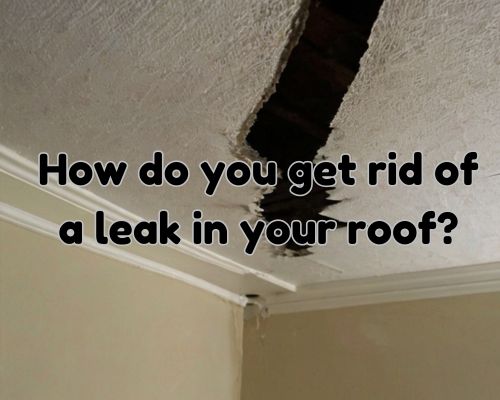Addressing a leaky roof promptly is crucial for preventing further damage to your home.
Water stains, peeling paint, or mold may indicate a problem, guiding you to investigate your ceiling and attic space.
The key to stopping a roof leak is accurately identifying its source and applying the appropriate materials and techniques to seal it effectively.
To find a roof leak, carefully examine areas prone to issues, such as roof valleys, flashing points, or around vents and chimneys.

Use tools like garden hoses for testing exterior surfaces or visually inspect indoor areas for moisture trails.
By systematically targeting potential problem areas, you can pinpoint the exact source of the leak.
Repairing a roof leak involves several steps, such as removing old roofing cement or sealant and applying new materials to ensure a watertight fix.
Be sure to check all edges and seams for a complete seal.
CJ Commercial Roofing NJ highlights that with the right approach, you can tackle your leaky roof efficiently, safeguarding your home from further water intrusion.
Identifying the Source of Roof Leaks
Effectively identifying the source of roof leaks involves both visual inspection and a keen eye for potential problem areas.
Water stains on ceilings or walls can be initial indicators of a problem, but pinpointing the exact source requires thorough investigation.
Detecting water damage, such as mold or missing shingles, is crucial to maintaining your roof’s health.
Inspecting for Damage
Begin your investigation by conducting a detailed roof inspection.
Look for obvious signs of damage, such as missing or damaged shingles. These can expose your roof to leaks.
Inspect roof valleys carefully as these are prone to collecting water.
Also, plumbing vent boots can crack, leading to leaks. Checking for rust or visible nail holes can reveal vulnerabilities.
In colder climates, watch for ice dams that trap water against the roof surface.
Performing these checks as part of routine roof maintenance helps in early detection.
Differentiating Normal Wear from Damage
Distinguishing between normal wear and potential damage can be tricky.
Regular wear might show as slight discoloration, while water stains or dark spots signal more serious issues.
Be aware that normal conditions like slight shingle buckling from age differ from severe damage such as large gaps or missing sections.
Routine roof inspections help in recognizing the threshold between age-related wear and actual damage that necessitates repairs.
Understanding that certain structures like chimneys and skylights require tighter seals helps differentiate normal wear from damaging leaks.
Use these insights to assess if professional repair might be necessary.
Repairing Your Roof
Based on CJ Commercial Roofing NJ, addressing roof leaks involves both temporary and long-term solutions. Understanding these methods ensures that you protect your home effectively from water damage and avoid mold growth or structural issues. Knowing when to call a professional can save you time and extensive repairs.
Temporary Solutions
For immediate protection from a roof leak, use a tarp to cover the affected area.
Secure it tightly with ropes or heavy objects to prevent wind from dislodging it. This approach temporarily guards against water entry while you plan more permanent repairs.
Consider roof sealant as a quick fix.
Apply a generous bead of the sealant to visible leaks, especially around roof penetrations like vents or chimneys.
This holds off further damage until a long-term solution is put in place.
Ensure all areas around roof flashing and exterior walls are covered to prevent additional leaks.
Long-Term Repairs
For lasting repairs, start by identifying and replacing damaged shingles.
Look for signs like curled shingles or missing pieces.
For asphalt shingles, carefully pry up the damaged sections and replace them using roofing nails.
If multiple shingles are compromised, consider a more extensive replacement of the roofing materials.
Inspect the roof decking beneath the shingles for water damage, replacing any compromised sections.
Address leaks around roof flashing by using roofing cement or roofing screws to secure and seal these areas.
Check dormers and other protrusions for leaks.
Remove any debris or old roof cement, and secure new flashing to prevent future water intrusion.
When to Call a Professional
If roof leaks are extensive, or if there’s persistent mold growth and musty odors, it’s time to contact a professional.
Roofers have the expertise to handle complex repairs involving extensive damage or structural issues.
Evaluate whether the cost and effort of DIY repair are worthwhile or if a professional roofer is better suited for the task.
Significant problems may include widespread shingle damage, large leaks, or compromised structural integrity.
Experienced roofers can offer warranties and peace of mind through their work.
Connecting with a reliable contractor ensures safety and high-quality materials for your roof repairs, reducing the risk of future leaks.